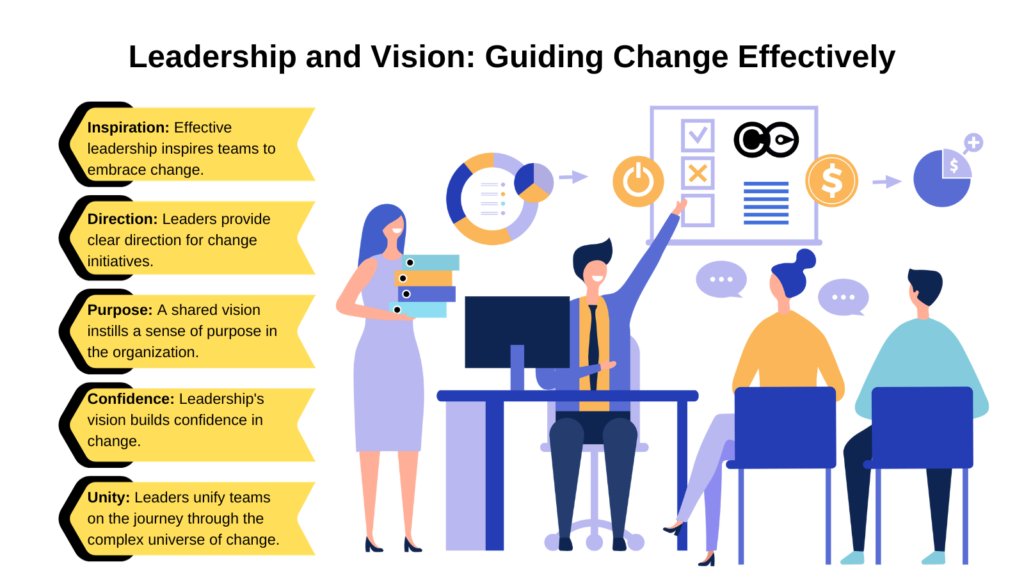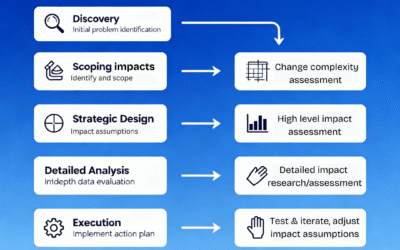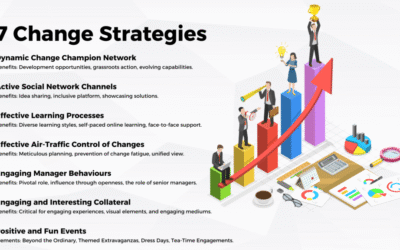In 1977, Ray and Charles Eames, celebrated for their iconic mid-century furniture, embarked on a cosmic journey. Their creation, “The Powers of Ten,” takes viewers from an ordinary picnic on Earth to the edges of the observable universe, showcasing the vastness and intricacy of our cosmos. Beyond its cinematic wonder, this film offers profound insights into change management – a journey of continuity and transformation. Let’s embark on a parallel voyage, learning valuable lessons from the Eames masterpiece. The link to the famous 9-minute video can be found here.
The Power of Change Management Components
Change management, much like the universe depicted in “The Powers of Ten,” encompasses a multitude of components. Let’s explore these components and understand how they relate to effective change management.
- Continuity and Change
In “The Powers of Ten,” we witness the dynamic interplay of continuity and change. Just as our universe maintains its constants while evolving, organizations must strike a balance between what remains unaltered and what must adapt. This balance is essential for effective change management. Identify the periods when your frontline staff are pivotal, align your change strategies with these busy phases, and ensure that new initiatives consider these high-activity periods.
- Understanding Cultural Context
In “The Powers of Ten,” every frame reveals shifting perspectives. Similarly, when communicating change, acknowledge the diverse lenses through which employees view your messages. Understand their cultural contexts and adapt your approach. One-size-fits-all communication often falls short. Tailor your messages to resonate with various audiences, fostering greater acceptance and engagement.
- Cross Collaboration through Context
Change flourishes when change drivers collaborate effectively with change receivers. Drivers must provide vision, intent, resources, and leadership, while receivers offer feedback, support, and behavioral adjustments. Successful collaboration relies on a deep understanding of each other’s contexts. Learn why changes are necessary, how to implement them, and what they require. Acknowledge the cultural context of those impacted by the changes, a crucial aspect often overlooked.
- Data-Driven Decision-Making
Statistics reinforce the importance of change management. According to a study by Prosci, organizations using a structured approach to change management are 78% more likely to meet or exceed their project objectives. This statistic underscores the need for a strategic, data-driven approach in change management. Make informed decisions, assess the impact of change initiatives, and use data to guide your strategy.
- Stakeholder Engagement and Communication
Effective change management relies on robust stakeholder engagement and clear communication. Just as “The Powers of Ten” engages viewers with its visuals and narration, your change initiatives should engage stakeholders through well-crafted communication strategies. Ensure all stakeholders are informed, involved, and heard throughout the change process.
- Leadership and Vision
In the Eames film, the journey from picnicking on Earth to exploring the cosmos required a guiding vision. Similarly, successful change management necessitates strong leadership and a clear vision for the future. Leaders must inspire, provide direction, and motivate teams to embrace change.

“The Powers of Ten” is more than a cinematic masterpiece; it’s a guide to navigating change within your organization. Embrace continuity while ushering in change, acknowledging the diverse cultural contexts of your employees. Facilitate collaboration through shared understanding, and maintain a sense of curiosity as you traverse the ever-evolving landscape of change management.
Take your first step into change management’s cosmic universe. Book a weekly demo with us to learn how to navigate the challenges and opportunities effectively.






